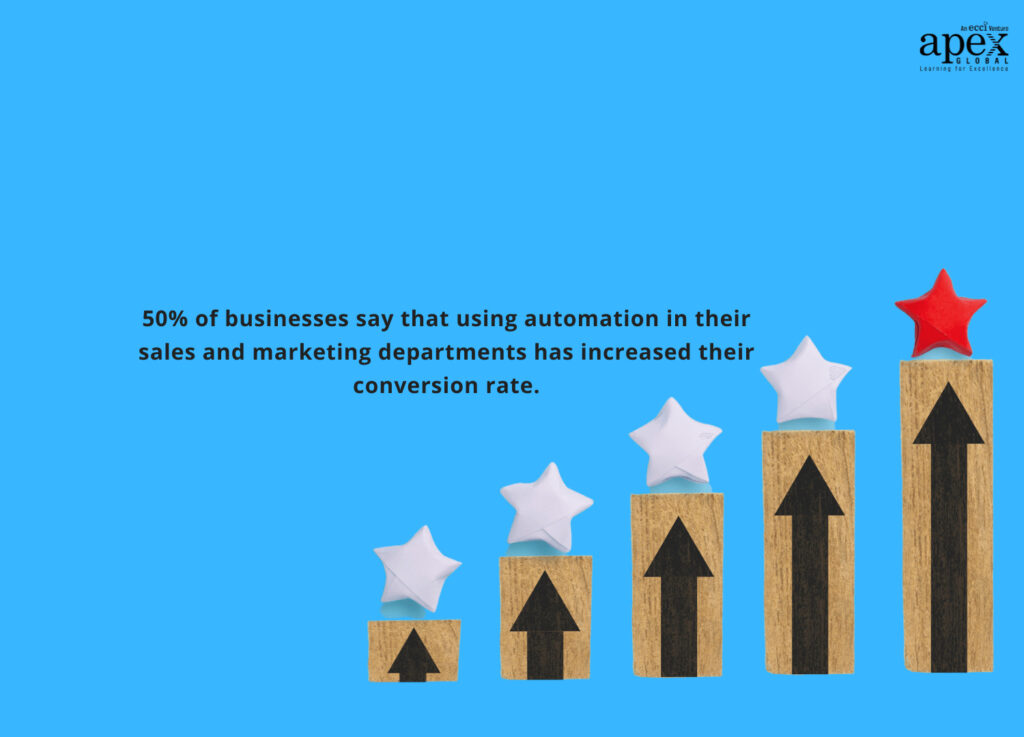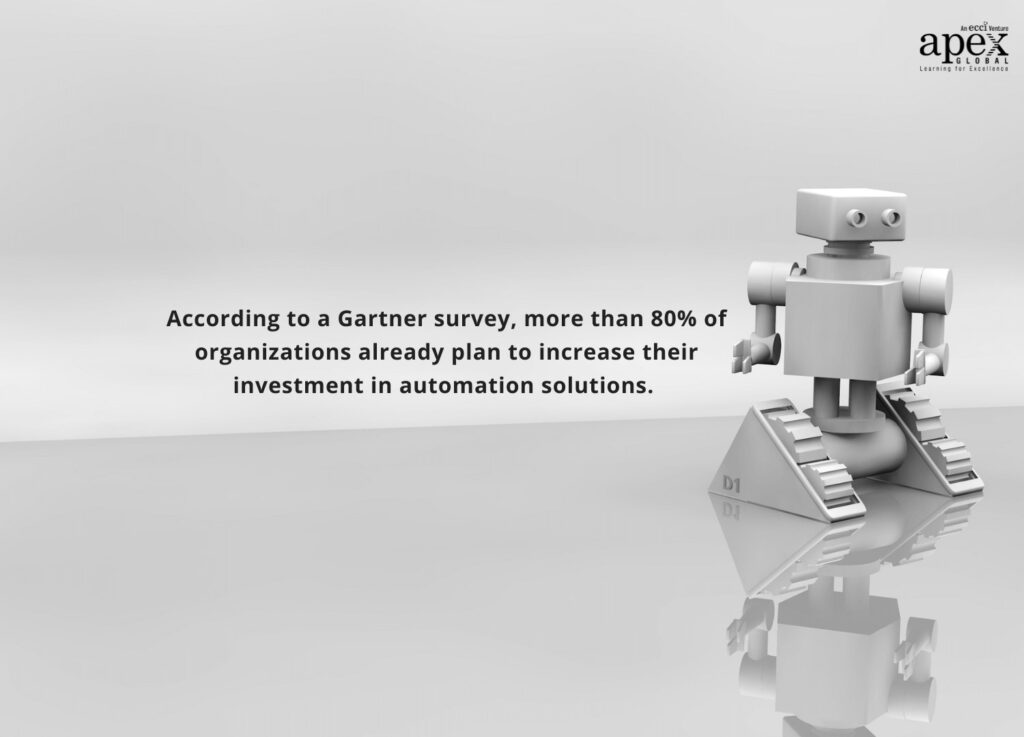If you’re a business owner, you will definitely be familiar with the pain of dealing with endless paperwork, repetitive tasks, and bottlenecks that slow down your progress almost every day.
But what if we told you there’s a better way? A way to automate those mundane processes, streamline your operations, and free up your time to focus on what truly drives your business forward.
Business Process Automation is here to transform the way you work. Imagine having the ability to automate customer onboarding, streamline your sales pipeline, or effortlessly manage your inventory—all with the click of a button. It’s like having a team of tireless assistants dedicated to optimizing your business processes and driving your success.
In this article, we’ll explore what BPA is and equip you with all the knowledge you need to harness the full potential of BPA. Ready? Let’s go!
What you'll find in this article
- 1 What is Business Process Automation?
- 2 Why should you care about Business Process Automation?
- 3 What business processes should you automate?
- 4 How is Business Process Automation related to Robotic Process Automation?
- 5 How is Business Process Automation related to Business Process Management?
- 6 Three Business Process Automation use cases
- 7 Five real-life examples of Business Process Automation
- 8 Seven practical tips to follow while implementing BPA in your organization
- 9 Wrapping up
What is Business Process Automation?
First of all, what exactly is business process automation?
Business process automation (BPA) is all about using advanced technologies to streamline and optimize various business processes in your organization.
It is the process of automating manual tasks and workflows using software applications and tools, thereby helping businesses eliminate mundane, error-prone activities and replace them with efficient and accurate automated processes.
BPA could involve automating simple activities, such as creating an automated email response, or more complex processes, such as report generation or data migration.
Why should you care about Business Process Automation?

So, why should you care about BPA? We’ll admit that business process automation isn’t the first thing that pops up when anyone searches “BPA” on Google. But, given its wide range of benefits, maybe it should be.
BPA helps businesses significantly reduce human error and increase overall productivity by automating repetitive tasks. Think about it – no more typos, no more missed deadlines, and no more mind-numbing data entry.
Another fantastic advantage of BPA is improved efficiency. With manual processes out of the way, your team can focus on strategic initiatives and high-value tasks that drive business growth. Imagine having more time for brainstorming creative ideas, engaging with customers, and developing innovative solutions. BPA empowers you to unleash your team’s full potential, fostering a culture of innovation within your organization.

Let’s not forget about the cost savings that come with BPA. In a world where every penny counts, automation can be a game-changer. By eliminating human error and streamlining processes, you’ll minimize costly mistakes and rework. Plus, automation allows you to scale your operations without hiring additional resources. That means more money in your pocket and the ability to allocate resources where they truly matter.
Last but not least, BPA enhances your customer experience. By automating processes like customer onboarding, order fulfillment, and support ticket management, you can deliver faster response times, personalized interactions, and seamless experiences, which will increase customer satisfaction and ultimately result in business growth.
What business processes should you automate?
Now that we’ve established the importance of BPA, let’s move on to the next step – identifying which business processes to automate.
After the last section, you might be thinking, All this sound great! Can’t we just automate all our business processes? But the answer is no. Not all business processes are suitable for automation.
That’s why, before you start implementing BPA in your organization, you should consider the following factors:
- Time-consuming
- Less complexity
- A high volume of processing
- Repetitive tasks
- High level of regulatory compliance
If a business process meets all the criteria listed above, then it is a great candidate for automation.
Some examples of activities that are most suitable for automation are e-mail and push notifications, helpdesk support, data aggregation & migration, employees’ leave request processing, payroll processing, invoicing, etc.
On the other hand, processes that lack structure, are subject to frequent change, involve complex decision-making, and critical thinking capabilities are not suited for automation.
While certain approvals and rejections can be automated with basic conditions, humans are better at making more complex decisions. So, processes that require a “human touch” shouldn’t be entirely automated. These include processes like giving difficult feedback, change management, or offboarding processes.
How is Business Process Automation related to Robotic Process Automation?
If you’re here reading about BPA, then you might have heard about Robotic Process Automation (RPA) as well. You might be wondering, are they the same thing? Well, not quite.
Business Process Automation is a broader concept that uses technology to automate and optimize business processes. The processes can either be simple tasks or an entire complex business process and can involve a wide range of technologies, including software applications, workflows, and integration tools.
RPA is a specific type of Business Process Automation that focuses only on the use of software robots or bots to automate repetitive, rule-based tasks or processes such as entering data into forms, copying and pasting information, or extracting data from documents.
How is Business Process Automation related to Business Process Management?
The terms Business Process Automation and Business Process Management are sometimes used interchangeably, but the fact is they are not the same.
Both BPA and BPM aim to help companies better realize their goals by improving business processes. But, the difference is BPA specifically focuses on using automation to streamline a process, while BPM may or may not include automation and uses various methods to streamline and improve business processes.
Think of BPM as the strategic framework and BPA as the operational engine. BPM sets the vision and methodology, while BPA executes that vision by automating specific tasks and ensuring smooth process execution.
Three Business Process Automation use cases
As we discussed earlier, business process automation is not only used for automating simple data entry tasks. Here are 3 use cases to illustrate what it can look like in these industries.
A. Sales processes
A consulting company eager to boost its revenue decides to shake things up by automating its sales processes. They want to smoothly guide potential clients through their sales funnel with minimal friction.
Here’s how they do it with BPA: first, they set up a web form that cleverly categorizes incoming requests for quotes. Once the type of request is determined, their CRM springs into action, automatically shooting off a tailored quote via email to those promising leads the very next day.
If these leads don’t respond, the CRM waits for five days before sending a friendly follow-up email. And if those leads take the plunge and show interest in a consultation, the CRM syncs up with a relevant consultant and seamlessly schedules a meeting based on everyone’s availability.
This way, BPA ensures that the whole sales process is carried out smoothly and quickly, making life easier for both the company and its potential clients.

B. Employee onboarding
Imagine the tedious process of onboarding new employees—collecting personal information, completing paperwork, setting up system access, and notifying various departments. With BPA, you can streamline this entire process, making it a breeze for everyone involved.
How is it done? The BPA software is set up to automate the collection of personal information through online forms, automatically populate HR databases, and trigger workflows to handle document generation and signing. It can also integrate with your existing systems to provision access rights and notify relevant departments to set up workstations and schedule orientation sessions.
By automating these steps, BPA simplifies onboarding, reduces errors, eliminates repetitive tasks, and ensures a smooth and efficient experience for new hires and HR teams alike.
C. Customer support processes
A SaaS company that knows the value of providing top-notch customer support uses BPA to help its support team. They introduce a clever chatbot into the mix. This little virtual assistant directs simple customer queries to the right help pages, saving everyone time and hassle.
For those trickier customer needs, the chatbot gives users a choice: they can either stick around in the chat or opt for an email response. Once the customer decides, the chatbot swiftly assigns the query to the next available support agent. And if that agent needs a backup or needs to loop in other team members, they can simply notify the team member, and the ticket will get transferred automatically.
These are just a few use cases. The truth is BPA can be used to automate any business process as long as it is rule-based and repetitive.
Five real-life examples of Business Process Automation
Now that you’ve gotten an idea of what BPA looks like in action, here are 5 real-life examples of companies that have successfully implemented BPA to automate their business processes and seen amazing results.
1) Approval requests
Audi Japan KK’s finance department regularly deals with multi-million dollar approval requests. They used BPA to streamline their process – going paperless and saved 60 hours per week with a 75% reduction in processing time, making the entire process more efficient, secure, and hassle-free.
2) Supplier onboarding
Adidas battled silos across departments, including operations, e-commerce, finance marketing, and retail, hindering time to market and supply chain visibility. They used BPA and standardized and automated their processes, making them reusable across departments, resulting in a two-thirds reduction in time to market.
3) Credit approval
AEON Credit Service (Asia) sought to improve its credit card application process. In the previous system, customers endured a lengthy two-week wait from form submission to receiving their new cards. The company used BPA and automated the process, slashing credit limit approvals to a mere 30 minutes. Now, customers can receive their new cards almost immediately, eliminating the frustration of prolonged waiting periods.
4) Pricing approval
Kyocera, a leading printer manufacturer in Japan, wanted to streamline its pricing approval process for larger accounts. Using BPA, they automated the process providing senior executives with more visibility and enabling swift decision-making. As a result, the pricing approval process was reduced by 85%, improving the turnaround time, and the company even started getting new business opportunities.
5) Auditing
Generali, a prominent European insurance provider, sought to break free from paper-based processes that were costing it time and money. Using BPA allowed the company to implement efficient, automated business processes that delivered instant results. Complex claims underwriting time was reduced by 50%, while reusable processes saved the company an impressive 90% in costs.
Seven practical tips to follow while implementing BPA in your organization
Ready to set up automation for your business processes? Great! But merely signing up for an automation tool is not enough to ensure success. To get the most out of this amazing technology, it’s crucial to take a practical and thorough approach when automating your business processes.
So, here are some practical tips for you to keep in mind while implementing BPA in your organization.
a. Start with clear goals
Before you start hiring developers to automate everything in your business, you should first have a clear understanding of your goals and objectives. Otherwise, you risk wasting valuable resources and investments without achieving the desired outcomes. So, first, determine what you want to achieve, whether it’s improving efficiency, reducing errors, enhancing customer experience, or increasing productivity.
b. Involve key stakeholders
Ensure that all relevant stakeholders, including employees, managers, and IT professionals, are involved in the implementation process. Get their input and feedback to understand their pain points and requirements. This way, you can increase the chances of successful BPA adoption.
c. Start small, scale gradually
Begin your BPA journey by automating a few processes or tasks as a pilot project. This allows you to learn from the experience, identify any challenges, and refine your approach. Once you achieve success, gradually scale up and automate additional processes.
d. Choose the right BPA tools
Choosing the right automation tools is crucial for ensuring successful implementation. Take some time to evaluate different BPA software options and choose a solution that aligns with your specific needs. Consider factors like scalability, ease of use, vendor support, compatibility with existing systems, etc. Check out our list of 7 best RPA tools for 2024 here.
e. Provide training and support
Getting all employees on board and making sure that they’re trained on the new tool is essential for a smooth implementation. They must be fully educated on the basics of the platform, the reason behind implementing automation, and the desired results. Also, foster a culture of continuous learning and offer them ongoing support to tackle any challenges that may arise.
f. Anticipate challenges
Keep in mind that technology is not 100% perfect, and things may go wrong anytime. So, monitor the processes carefully and prepare for any challenges that may arise. Build and maintain a dedicated technical support team to deal with any software problems. Regularly review performance reports to gain insight into preventive measures you can take to avoid recurring errors.
g. Evaluate regularly
Regularly monitor the performance of your automated processes and evaluate the outcomes. Track key metrics such as time saved, cost reductions, error rates, and customer satisfaction. Based on the insights gained, continuously refine and optimize your processes.
Wrapping up
The world of business process automation is rapidly expanding, with its adoption skyrocketing by the day. As more and more organizations recognize the immense value and transformative potential of automation, there has never been a better time to dive into this exciting field. By becoming an automation engineer and mastering BPA, you can position yourself at the forefront of this revolution. Learn more about career possibilities in the RPA field here.

If you’re looking to get into automation, APEX Global’s Business Process Automation with UiPath course is a great place to start. Enroll in our immersive training today and gain the skills, knowledge, and hands-on experience needed to excel in your automation journey.
Have any questions? Please reach out to us at [email protected]. We’d love to hear from you!


